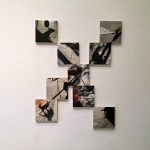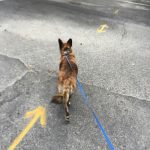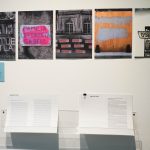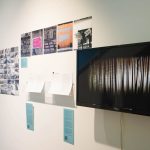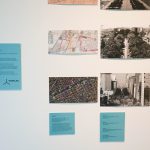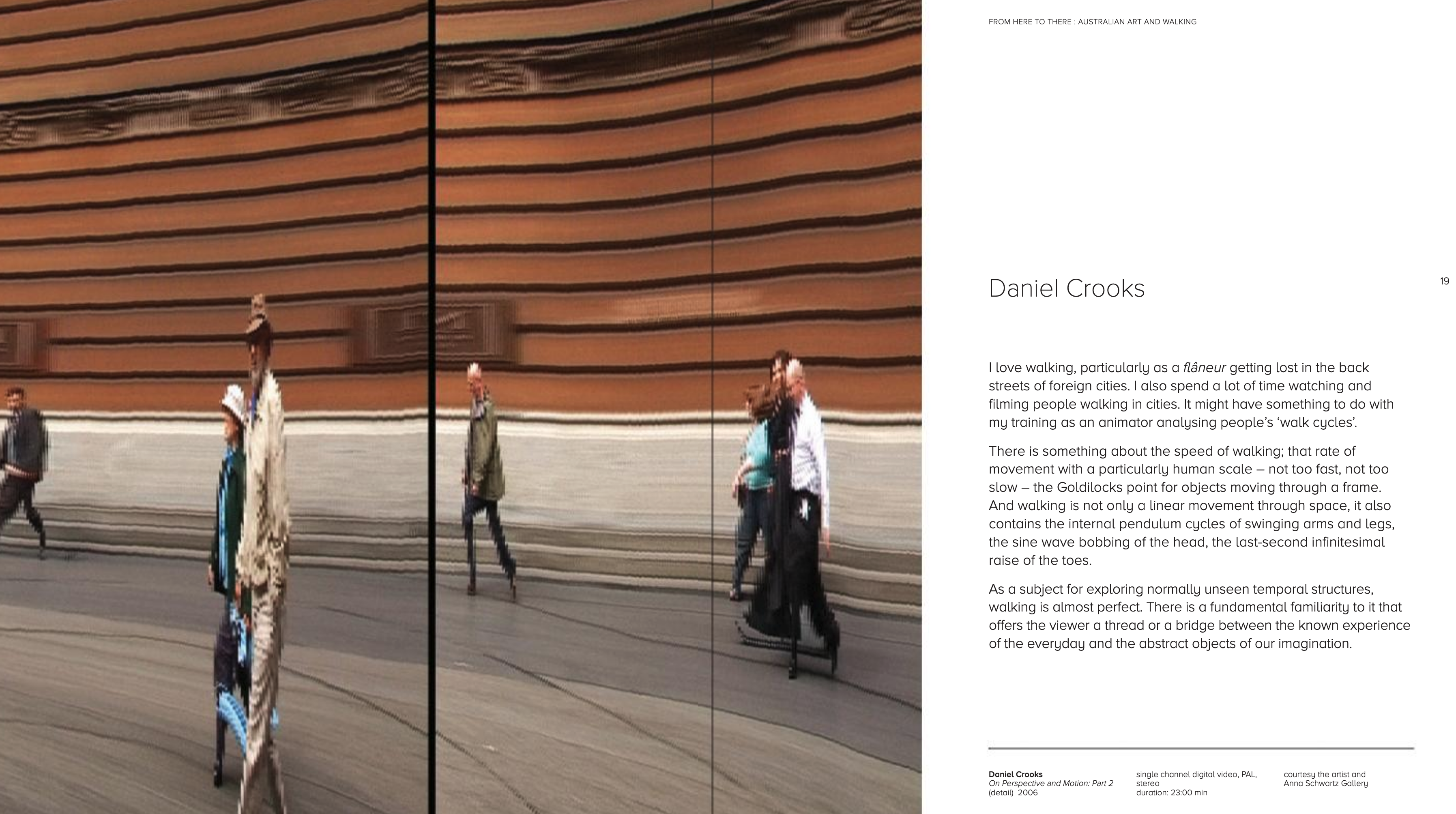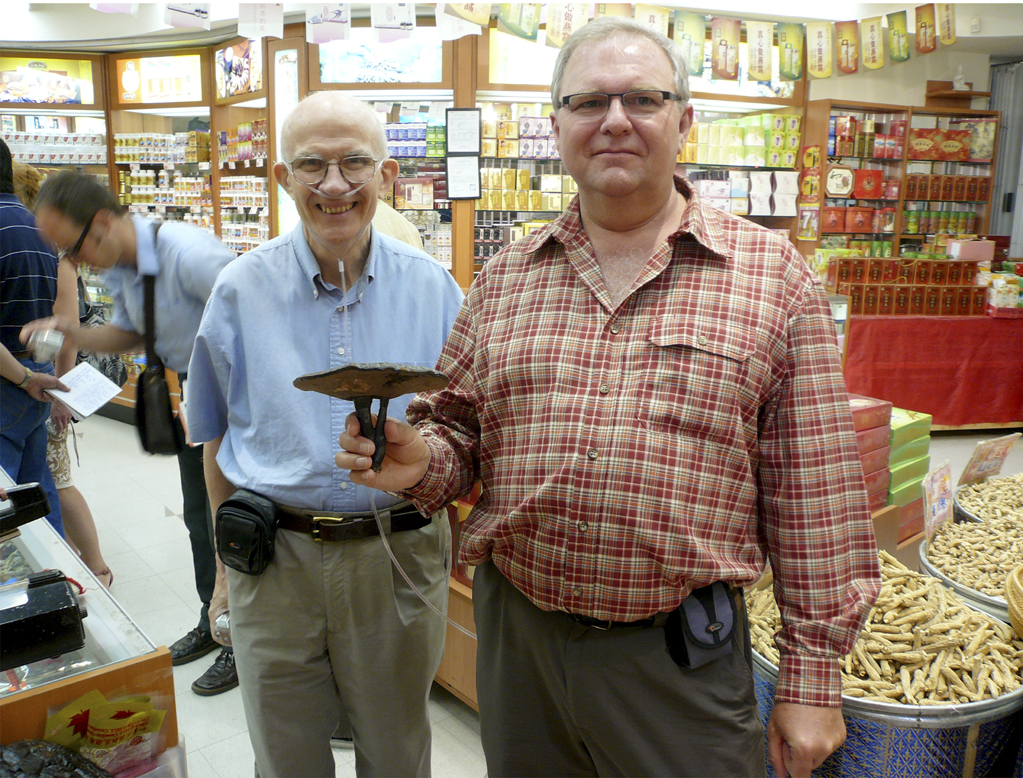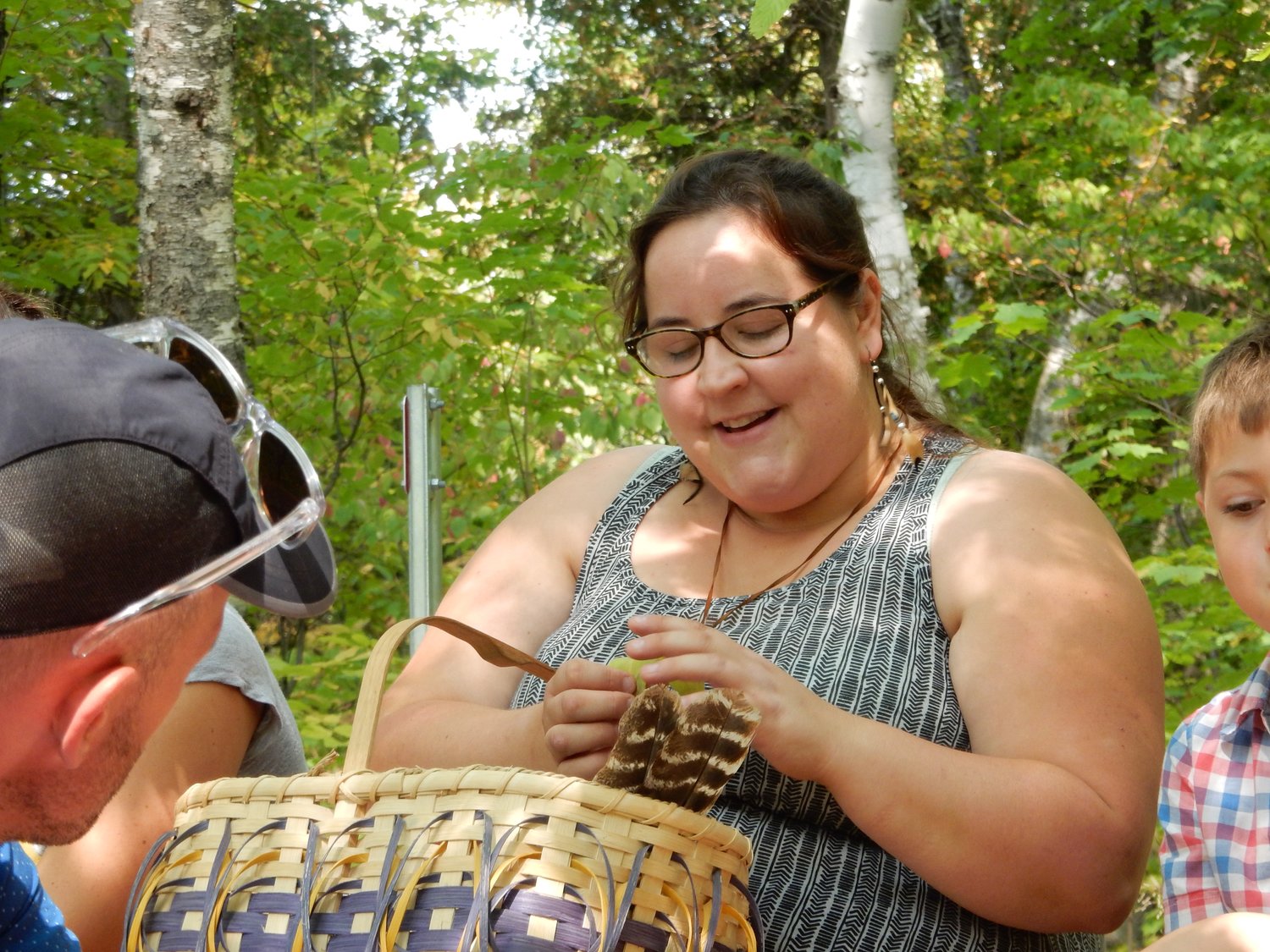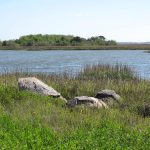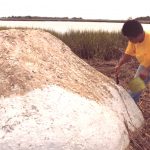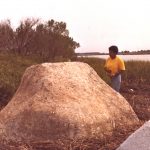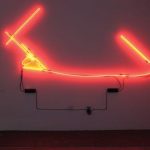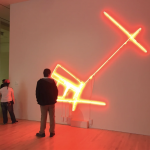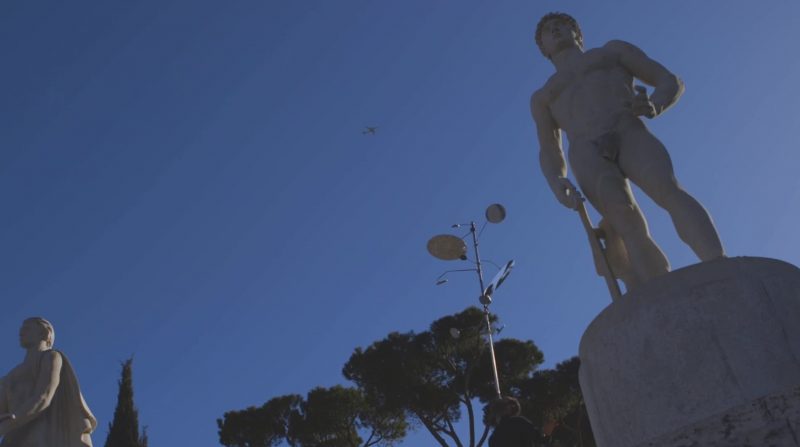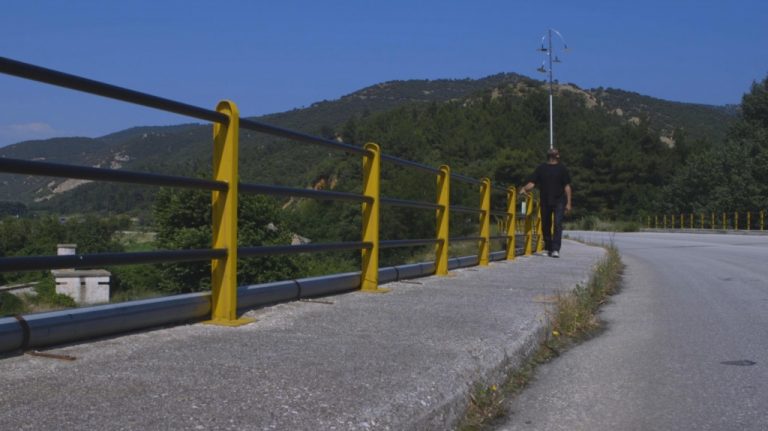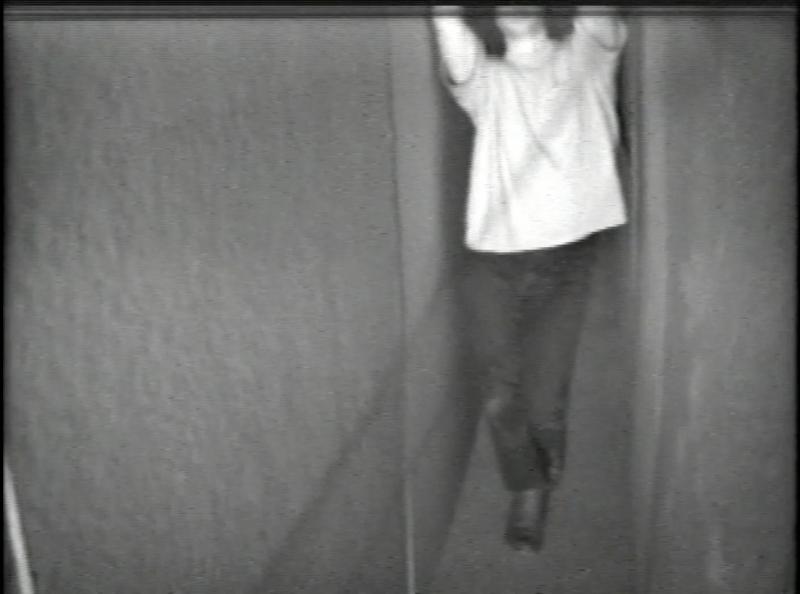““Vixen. Vector” is a photographic series and installation that follows a former street dog essentially exploring Cartesian geometry on the streets of New Orleans (as she defies Cartesian dualism). She conducts a visual conversation with me using her body (and secondarily, the lines of the leash) to underline and express fleeting alignments and discoveries within urban (but also natural) spaces. I take photographs, shot from the hip as it were, cued by her pauses and interactions. How she moves, and how I move relative to her reveal angles of discovery and an essential and consciously rendered geometry. ” (from email exchange, June 2011)
“Lee Deigaard, Vixen. Vector
An arrangement of photographs chronicling sympathetic alignments and other canine geometries.
Former street dog defies Cartesian dualism, illuminates Cartesian geometry on the streets of New Orleans.
In my work, exploring levers of empathy (particularly between species), capturing the incidental signifiers (gesture, transient expression) relies on a convergence of reflex and impulse, situation and timing. On daily walks, tiger dog moves through the big city, carrying nothing, wearing nothing; her body is her vehicle and her expression. Photographs from our outings reveal fleeting and yet deliberate synchronicities and alignments– of limb and leash, shadow and sidewalk crack– created by a dog finding her place and translating her role within it. Through companionate mirroring of animate and inanimate forms, she delineates subtle harmonies. Her everyday geometry, its ephemerality and its searching sequences, are both improvisations and statements. To see the city through her is to discover a cursive- of routes and scent trails, of scribbled street runes. It’s an experience of deep reading.
Rescued from the streets, she retains aspects of a wild creature, like a coyote or a vixen, and the decisions she makes about where to go– the ways she exercises her autonomy, posits her theories of whereabouts and motives, and hunts the evidence– carry added poignancy.
Lee Deigaard lives and works in New Orleans, Louisiana and in rural Georgia. Her studio practice engages wild animals and collaborates with animals who are friends and family. Her work explores animal protagonists and the emotional spaces and physical landscapes where humans and animals co-habitate.” (credit)
